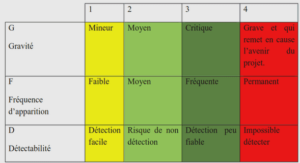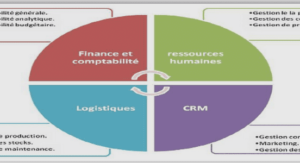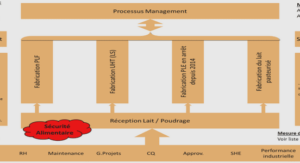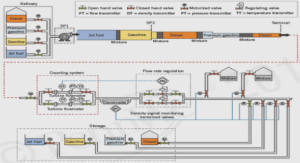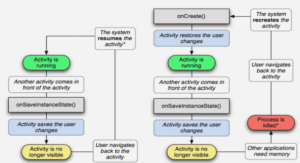Éffet de l’intention sociale sur la cinématique des actions motrices volontaires
Cette première étude a pour but de tester l’hypothèse principale de cette thèse qui est que la cinématique des mouvements d’un agent est affectée par le type d’intention sociale que celui-ci poursuit. Comme nous avons pu le détailler dans la partie introductive, les intentions motrices ont souvent été manipulées conjointement avec les intentions sociales lors de l’investigation de ces dernières, empêchant toute conclusion tranchée. Afin de prévenir au maximum l’influence de toute variable confondue, nous avons opposé de nombreuses conditions expérimentales au sein desquelles nous contrôlions progressivement les effets que pouvait entraîner le fait d’agir avec une autre personne. Les participants étaient ainsi assis à table et avaient pour consigne de réaliser une séquence d’actions consistant à déplacer un petit totem en bois d’une position à une autre en réponse à différents stimuli auditifs (voir description du dispositif expérimental, dans le préambule de la partie expérimentale du manuscrit). Ils pouvaient exécuter ces actions seuls ou en présence d’un partenaire (ce qui permet d’investiguer le simple effet d’audience), qui pouvait être spatialement distant ou proche des participants (ce qui permet d’investiguer l’effet d’agir à proximité d’un partenaire) et qui pouvait avoir à réaliser ou non l’Action principale de la séquence (ce qui premet d’investiguer l’effet de l’intention sociale sur les mouvements de l’Action préparatoire). Par ailleurs, le partenaire pouvait agir de façon systématique, ou non, au cours d’une session expérimentale (ce qui permet d’investiguer l’effet de l’imprédictibilité de l’environnement entraînée par la coaction avec autrui dans un environnement restreint). Enfin, de façon tout à fait intéressante et à l’inverse de ce qui est fait dans l’ensemble des études présentées en introduction, les analyses portent ici principalement sur un mouvement préparatoire (Action 92 préparatoire), non pertinent pour la tâche que les participants pensaient mener à bien (Action principale) et exécuté sans aucune contrainte temporelle. 93 Etude 1: Effects of social intention on movement kinematics in cooperative actions Abstract Optimal control models of biological movements are used to account for those internal variables that constrain voluntary goal-directed actions. They however do not take into account external environmental constraints as those associated to social intention. We investigated here the effects of the social context on kinematic characteristics of sequential actions consisting in placing an object on an initial pad (preparatory action) before reaching and grasping as fast as possible the object to move it to another location (main action). Reachto-grasp actions were performed either in an isolated condition or in the presence of a partner (audience effect), located in the near or far space (effect of shared reachable space), and who could intervene on the object in a systematic fashion (effect of social intention effect) or not (effect of social uncertainty). Results showed an absence of audience effect but nevertheless an influence of the social context both on the main and the preparatory actions. In particular, a “localized” effect of shared reachable space was observed on the main action, which was smoother when performed within the reachable space of the partner. Furthermore, a “global” 94 effect of social uncertainty was observed on both actions with faster and jerkier movements. Finally, social intention affected the preparatory action with higher wrist displacements and slower movements when the object was placed for the partner rather than placed for self-use. Overall, these results demonstrate specific effects of action space, social uncertainty and social intention on the planning of reach-to-grasp actions, in particular on the preparatory action, which was performed with no specific execution constraint. These findings underline the importance of considering the social context in optimal models of action control for human-robot interactions, in particular when focusing on the implementation of motor parameters required to afford intuitive interactions.
Participants
Twenty-one healthy adults took part in the experiment (mean age = 22.7, SD = 4.8). All participants were right-handed, with a mean laterality coefficient of 0.88 (Edinburgh Handedness Inventory, Oldfield, 1971) and had no prior knowledge about the scientific aim of the study. Participants provided informed consent before participating in the experiment. The experimenter, a 23-year-old man, played the role of the social partner in all the social conditions requiring a second participant. The protocol followed the general ethics rules defined by the Helsinki guidelines for human experiments and was approved by the local institutional ethic committee.
Apparatus and stimuli
Participants sat in front of a table (180 x 90 cm) on which red landmarks (3 cm x 3 cm) symbolized three specific locations that will be referred to in the next section as the initial position, the central position and the end position (see Figure 1). In addition, two targetlocations were placed on either side of the table, and were used to indicate the starting hand position for both the participant and the experimenter. The object that was to be manipulated was a wooden dowel (width 2 cm and height 4 cm), which was placed on the initial position at the beginning of each trial. In order to prevent any influence of verbal instruction, all trials were triggered through the emission of auditory tones broadcasted by computer speakers.
Procedure
During the experimental session, both the participant and the experimenter were seated on either side of the table, facing each other. The participants’ task was to reach and grasp the dowel between the thumb and the index finger in order to move it from one position to the other. Each trial started with the object placed at the initial position and with participants pinching their index finger and thumb together, with the fingertips set upon the starting hand position. A trial was defined as a series of three successive action sequences: Preparatory Action, which consisted in displacing the dowel from the initial to the central position (no temporal constraints), the Main Action which consisted in displacing as fast as possible the dowel from the central to the end position, and the Repositioning Action which consisted in displacing the dowel from the central to the initial position (no temporal constraints), making the setup ready for the next trial. Time pressure was set on the Main Action only and for this movement, the speed of the participants’ wrist was required to be superior to 80% of maximal speed (previously registered, see below). Each move was triggered by a different broadcast tone, which was always played in the same order (tone 1 initiated the Preparatory Action; tone 2 initiated the Main Action; tone 3 initiated the Repositioning Action). In order to prevent participants from anticipating the time of movement initiation, the time intervals between tones were randomized and lasted unpredictably between 1 and 3 seconds. Tone 2, which initiated the Main Action, could be one of two pitches (low or high). When tone 2 was high-pitched, participants were to perform the Main Action as quickly and as accurately as possible. When it was a low-pitch tone, participants were to required to refrain from moving and the experimenter was to pick the dowel up from the central position and to place it on the end position as quickly and as accurately as possible.
